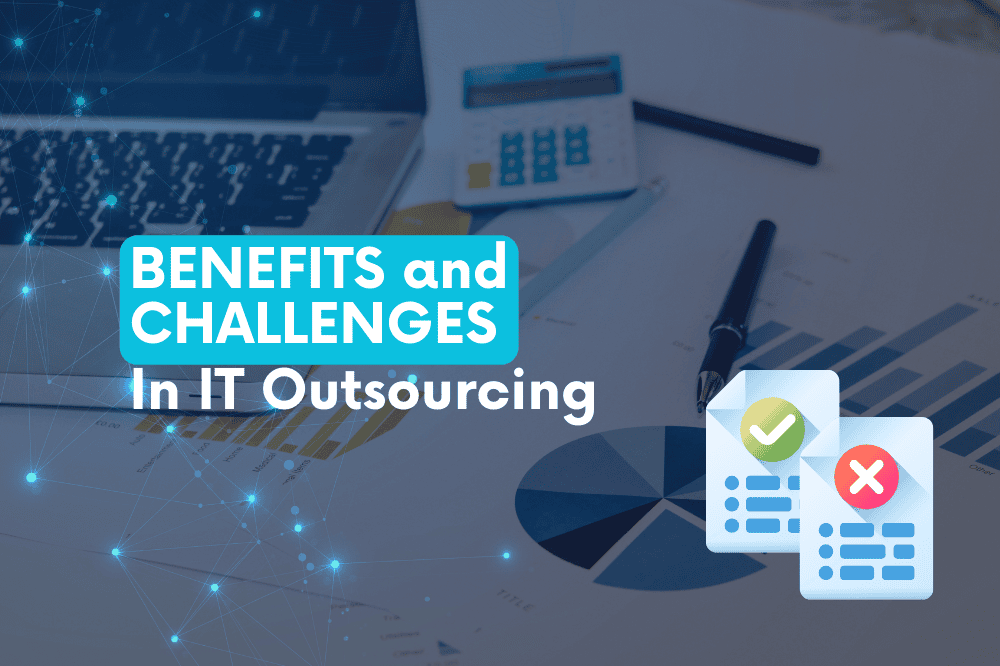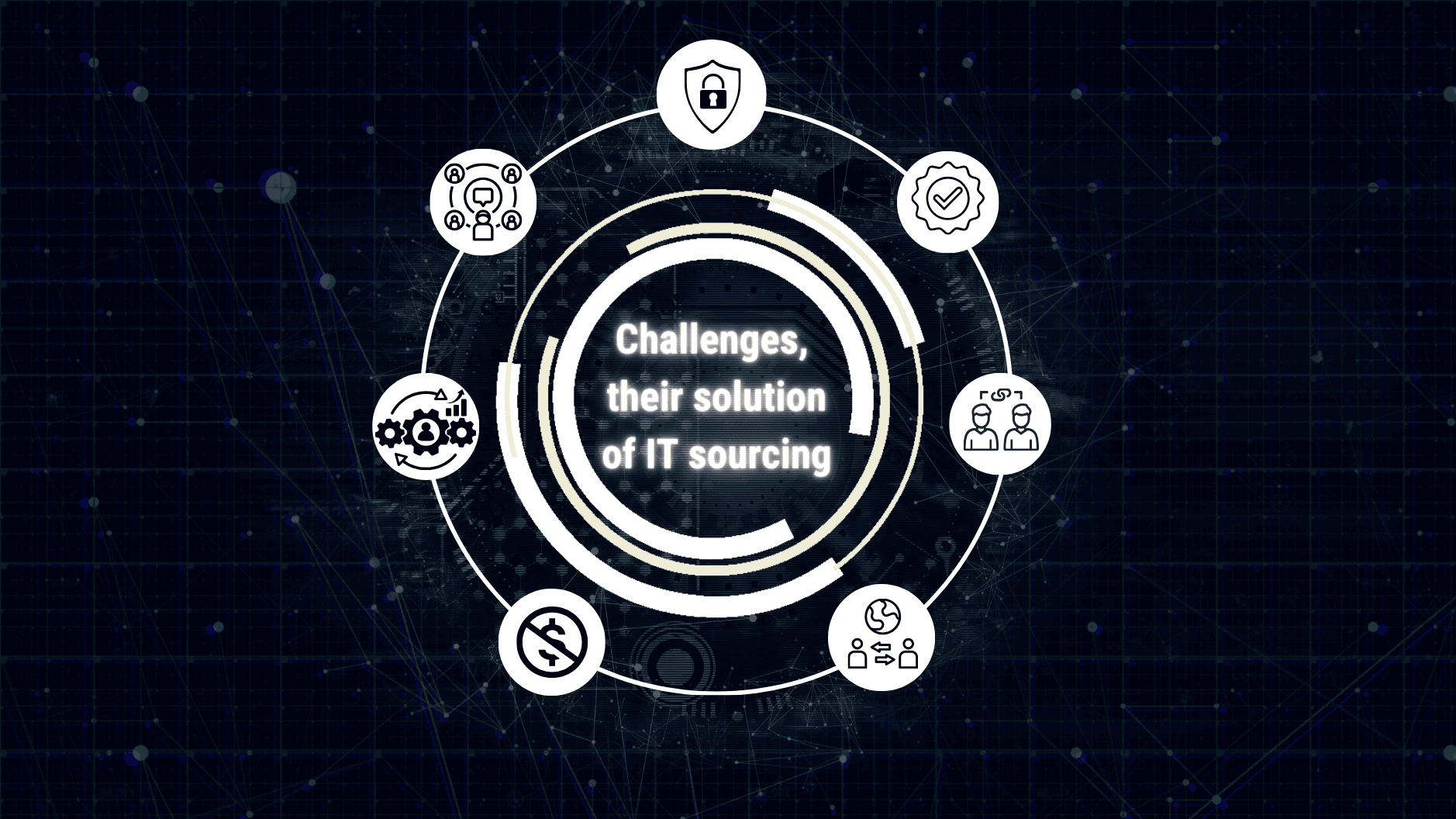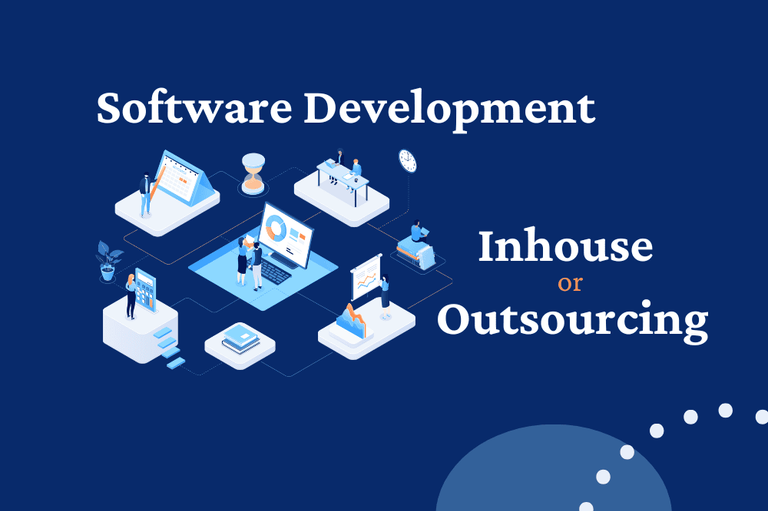
In order to access specialized expertise, cut expenses, and concentrate on their core capabilities, web and app development organizations now consider outsourcing to be an essential part of their current business processes. However, outsourcing has benefits and drawbacks just like any other strategic choice. We will explore the nuances of outsourcing in this blog, weighing the benefits and drawbacks, to assist you in making decisions that are best for your company.
The effective utilization of these collaboration and price models in IT outsourcing not only facilitates operational efficiency but also offers distinct advantages to businesses. The utilization of outsourced IT services allows companies to harness a lot of benefits that contribute to their overall success and competitiveness in the market.
One of the primary reasons driving the widespread adoption of IT outsourcing is its role in providing critical tech support and closing skill gaps within in-house teams. By leveraging the expertise of external professionals, companies can access top-tier engineering and digital talent worldwide, often at a lower cost and with significantly faster turnaround times compared to recruiting full-time employees.
The advantages of incorporating outsourced IT services are multifaceted.
Minimization of expenditures associated with in-house recruitment, training, and retention, leading to a more effective allocation of resources. Opting for offshore developers is often more economical than hiring local developers in developed countries like the US, and EU…, making it a budget-friendly choice for businesses seeking skilled expertise.
Harnessing a global talent pool with specific proficiencies not always accessible internally, fostering ingenuity and troubleshooting within the IT realm.
Redistribution of internal resources to concentrate on strategic innovation and fundamental capabilities, enhancing overall effectiveness and operational dexterity.
Tailoring IT resources and services to meet fluctuating market demands, ensuring adaptable and efficient operations that swiftly adapt to evolving business needs.
Implementation of specialized industry know-how, expertise, tools and protocols by IT outsourcing providers, resulting in improved performance, dependability, and safeguarding for businesses.
By collaborating with a reputable IT outsourcing provider, businesses can leverage the experience and proficiency of IT outsourcing professionals and mitigate risks associated with software development, ensuring the reliability and resilience of their projects.

In conclusion, the adoption of IT outsourcing serves as a pivotal strategic enabler, facilitating cost savings, access to specialized expertise, streamlined business operations, scalability, enhanced service quality, and risk mitigation. This approach proves to be an indispensable asset for businesses aiming to develop, enhance, or streamline their software products in the competitive global market.
While IT outsourcing offers numerous advantages, it also presents several key challenges and potential risks that businesses must consider and manage effectively. Understanding these obstacles is crucial to developing a comprehensive outsourcing strategy that maximizes benefits while mitigating potential drawbacks.

Certainly, here are eight common challenges in IT outsourcing along with possible solutions:
Navigating these challenges and risks requires a proactive approach that includes robust due diligence, comprehensive contractual agreements, effective communication protocols, and a well-defined risk management strategy. By addressing these factors early in the outsourcing process, businesses can optimize their outsourcing endeavors and ensure a successful and sustainable partnership with external service providers.
The following case studies showcase how strategic IT outsourcing can address various challenges and drive positive outcomes for organizations across different industries. Over 9 in 10 of the top 2000 global companies had IT outsourcing contracts in 2019. Business process outsourcing was less popular than IT, with only 59% of G2000 companies having a contract. (ISG)
Challenge: General Motors sought to modernize its IT systems and reduce costs.
Solution: Entered a groundbreaking outsourcing agreement with Electronic Data Systems (EDS) to manage its IT operations.
Result: This historic deal marked one of the largest outsourcing contracts at the time, significantly transforming General Motors' IT capabilities and influencing the outsourcing landscape.
Challenge: Bharti Airtel, a leading telecommunications company, faced the challenge of managing a rapidly growing IT infrastructure.
Solution: Outsourced its IT operations to IBM, allowing Bharti Airtel to scale its IT capabilities efficiently.
Result: The partnership led to significant improvements in IT infrastructure management, cost optimization, and enhanced service delivery for Bharti Airtel.
Challenge: Unilever aimed to stay competitive in the evolving consumer goods industry, prompting the need for a digital transformation to enhance capabilities and streamline operations.
Solution: Partnering with Accenture in 2021, Unilever deployed a suite of digital services, including AI and analytics, addressing immediate needs and laying the foundation for a robust transformation.
Result: The collaboration resulted in tangible improvements, strengthening Unilever's digital capabilities and optimizing customer experiences. Leveraging Accenture's expertise positioned Unilever as a more digitally agile and competitive player. This success highlighted the impact of strategic IT outsourcing in driving meaningful digital transformations.
These case studies provide valuable insights into the positive outcomes that result from meticulous vendor selection. Understanding these successes serves as a foundation for exploring what businesses should consider when outsourcing to an external vendor.
When considering outsourcing to an external vendor, it's crucial to address potential challenges and focus on finding a long-term partner that aligns with your requirements in terms of software quality, development costs, and collaboration. Begin your search by identifying the specific reasons for outsourcing, whether it's software development, enhancement, or maintenance to determine the most suitable nearshore or offshore location based on your needs and budget.
To ensure a successful partnership with an IT outsourcing vendor, key factors should be taken into account:
At BlueOC, our commitment involves implementing standardized development processes to ensure flexibility at every stage of your project. Our team, consisting of proficient English and Japanese project managers, alongside skilled developers, is dedicated to gaining a comprehensive understanding of your requirements. This approach is designed to contribute to the success of your business endeavors by fostering effective communication and a proven working structure to deliver successful project outcomes.


